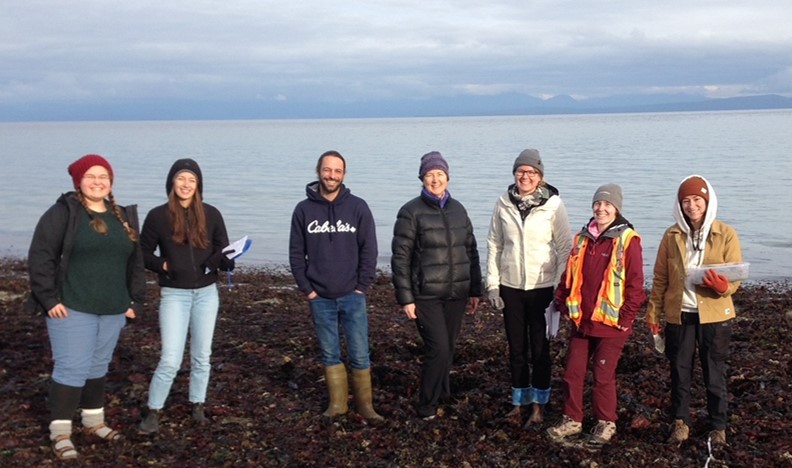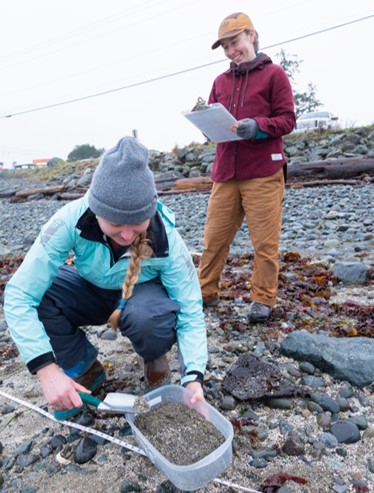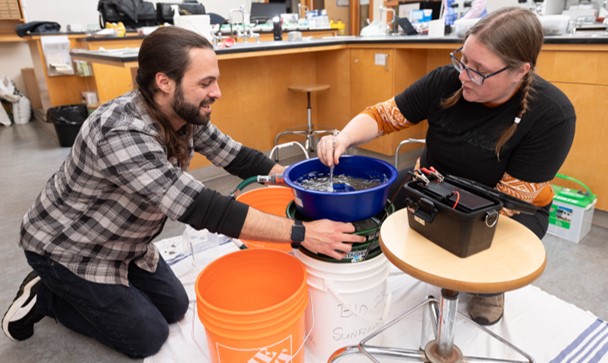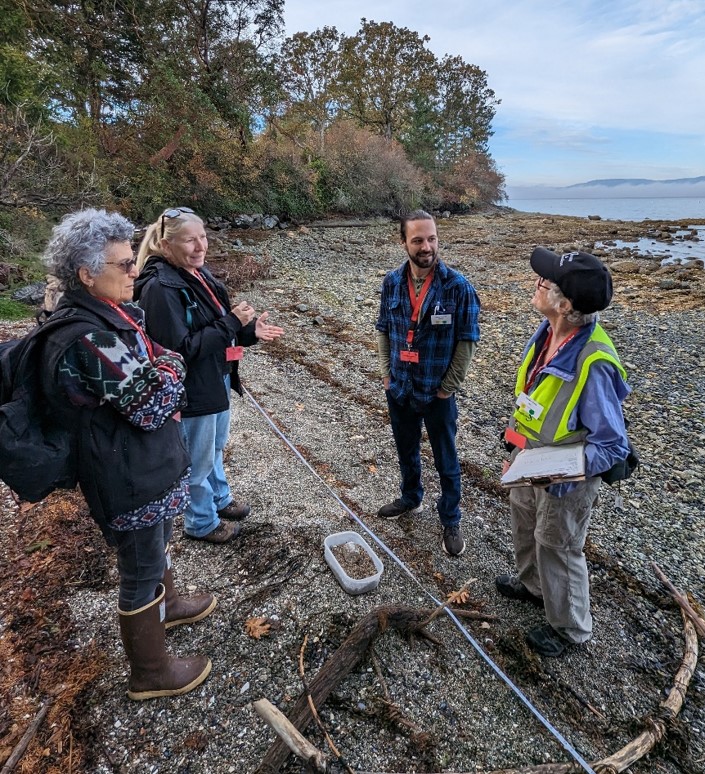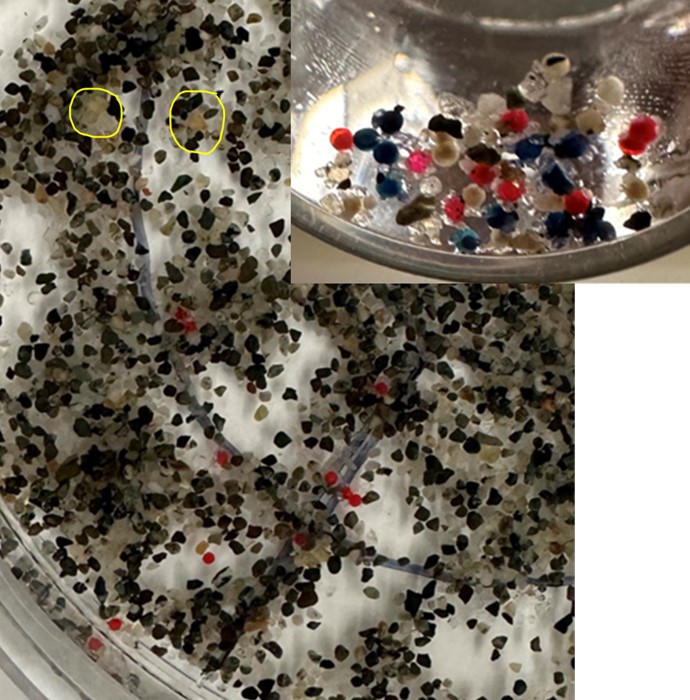Working Together to Identify Forage Fish Spawning Beaches
Sampling at Airforce Beach ~ G. Harrison
Sampling at Point Holmes ~ Island Photo
Sieving and Vortexing at NIC ~ Island Photo
Forage Fish egg ID workshop ~ Island Photo
Using the Dye Method ~ A. Schmidt
This year marks the 5th year of a partnership between Comox Valley Project Watershed Society (CVPWS) and North Island College (NIC) on a long-term study to examine intertidal spawning habitats of forage fish in the northern Salish Sea. NIC Students and faculty have been working in partnership with CVPWS staff to collect sediment samples from potential spawning beaches and examine these samples for the presence of forage fish eggs. This collaborative project has provided opportunities for NIC biology students to apply their skills and knowledge from their coursework to actual research experiences. NIC students have learned practical skills, worked alongside professional biologists and citizen scientists, and have contributed to a study that will ultimately help conserve forage fish populations and maintain our marine ecosystem.
Through the collaborative efforts of CVPWS and NIC, 37 intertidal spawning habitat samples were collected from November 9, 2023, to February 12, 2024. Sampling sites included beaches from Campbell River to the Comox Valley, Cortes Island, Denman Island, and Hornby Island. Beach samples were collected and processed by CVPWS staff, many citizen scientist volunteers, and NIC faculty and students. Six NIC biology students formed the “egg hunting” team at NIC’s biology lab (Sam Clark, Taylor McManus, Melissa Roberts, Aaron Schmidt, Sam Schneider, Amber Urbshas). These students collectively spent 190 hours searching for eggs during the past field season. A total of 432 Pacific sand lance (Ammodytes personatus) eggs were identified in the 37 beach samples. Egg identification was made much easier with the use of three specialized LED dissecting microscopes that were purchased by NIC’s Centre for Applied Research, Technology and Innovation (CARTI).
NIC students Sam Schneider and Aaron Schmidt along with instructor Georgie Harrison, had the opportunity to attend the 1st Annual Forage Fish Egg ID Workshop hosted by Peninsula Streams Society and Fisheries and Oceans Canada (DFO) at the Institute of Ocean Sciences in Sidney, BC (Oct. 13). This was a wonderful opportunity to learn more about forage fish egg identification from Biologist Moira Galbraith (DFO), get a “hands-on” refresher on beach sampling protocol, and to network with other Coastal Forage Fish Network members.
Aaron Schmidt, a second year biology student, conducted an experiment to evaluate the effectiveness of using chemical dyes to improve the detection of Pacific sand lance eggs in beach sediment samples. Aaron’s research was part of a Directed Studies in Biology course offered at NIC (BIO 250). Under the supervision of instructor Georgie Harrison, Aaron compared the detection of eggs in sediment samples that had been treated with a chemical dye (red food colouring or methylene blue) to untreated samples. The results clearly indicate that dyed eggs are much easier to detect than undyed eggs; eggs dyed with red food colouring being the easiest to detect. This research has inspired Aaron to explore the feasibility of applying red food colouring to sediment samples at beach sites in order to quickly assess presence or absence of spawned forage fish eggs.
The combined efforts of the CVPWS forage fish citizen science program and NIC’s biology students and faculty have contributed to the awareness and understanding about the crucial role of forage fish in marine ecosystems. The success of this collaboration exemplifies the benefits of partnerships between community organizations and academic institutions. We look forward to another year of collaborative work!
Post written by:
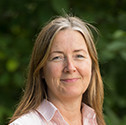
Georgie Harrison
Faculty | NIC


